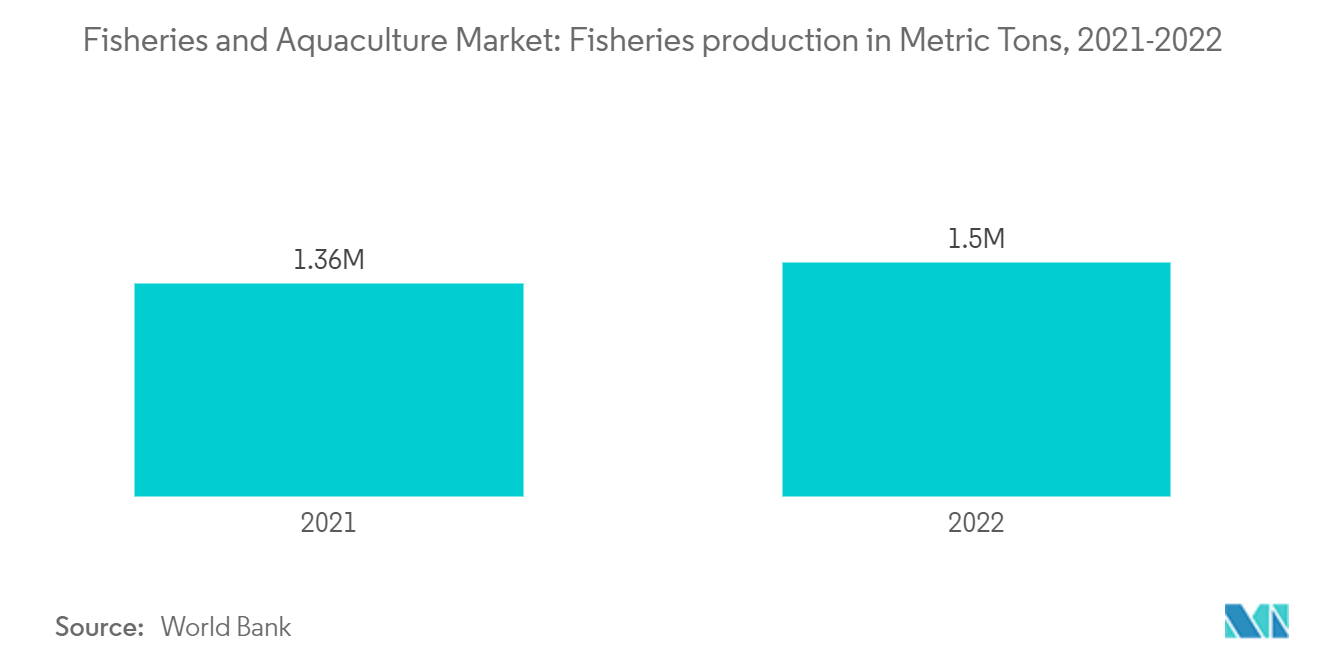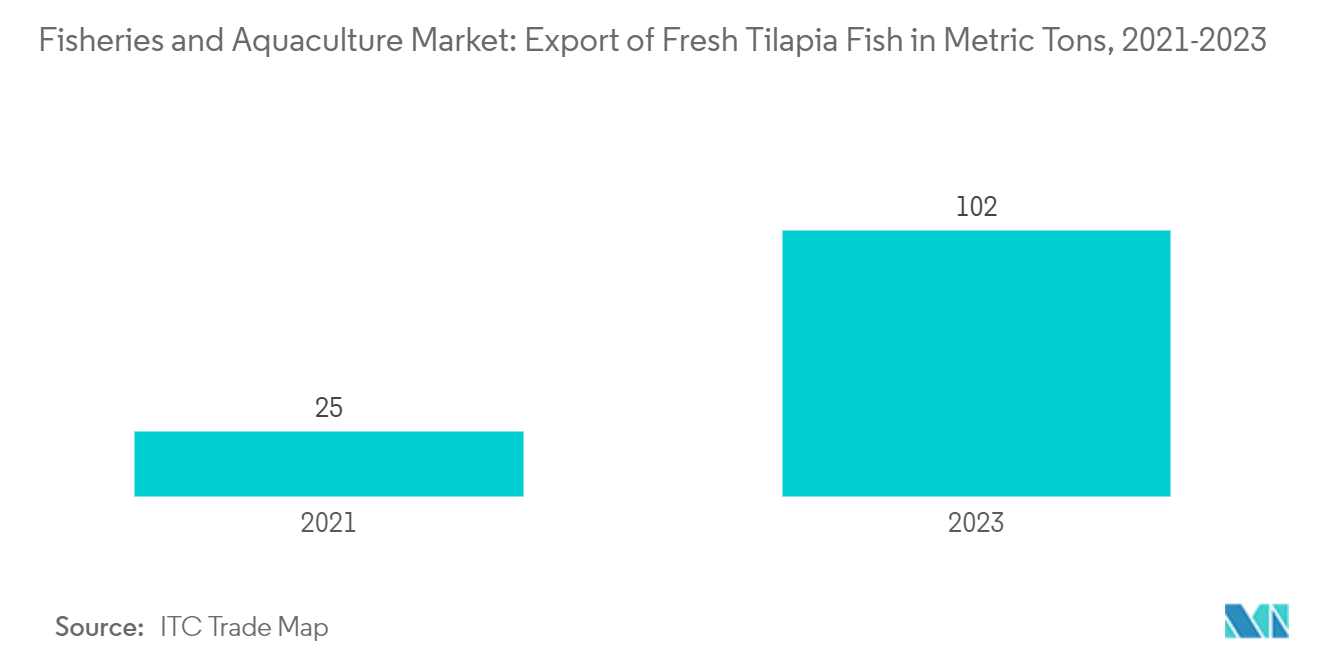Market Trends of Brazil Fisheries And Aquaculture Industry
Brazil's Fisheries Production Surges Amid Rising Fish Demand
In Brazil, surging fish demand is propelling the growth of fisheries production. With its extensive coastline, varied freshwater systems, and an expanding market for seafood both domestically and globally, Brazil stands poised to amplify its fisheries and aquaculture sectors. As the largest nation in South and Central America and the world's fifth largest in fisheries production, Brazil plays a pivotal role in the regional and global seafood arena. Presently, it ranks as the second-largest aquaculture producer in the Latin American and Caribbean region. For instance, according to World Bank Data, Brazil's Fisheries production was 1,361,646 metric tons in 2021, which increased to 1,497,393 metric tons in 2022.
With over 200 million people, Brazil witnesses a rising domestic appetite for fish as a primary protein source. Fish holds a prominent place in Brazilian cuisine, particularly in coastal areas and the Amazon Basin. Further, there's a growing consumer preference for freshwater fish like tilapia, as they are high in nutritional value, especially protein, and contain very low calories. Moreover, they are also rich in minerals and vitamins, like iron, calcium, sodium, phosphorus, zinc, magnesium, potassium, iodine, niacin, riboflavin, thiamin, vitamin A, vitamin E, vitamin B6, and vitamin B12. All the nutrients together make them healthy food. Therefore, the trend towards a healthy, high-protein diet is leading to higher fisheries production, which in turn is driving the market.

Fresh/ Chilled Fisheries Dominate the Market
Brazil has one of the world’s largest reserves of freshwater, with vast river systems such as the Amazon, São Francisco, and Paraná rivers, as well as numerous lakes and reservoirs. This natural infrastructure supports the growth of freshwater aquaculture. Further, the warm climate in most parts of Brazil provides ideal conditions for the rapid growth of freshwater species, allowing for year-round fish farming in many regions.
Brazil is one of the giants in the fresh fisheries production and processing of fish among South American nations especially freshwater species like tilapia and catfish. Tilapia is the most produced and exported species in Brazilian aquaculture. Brazil is one of the top tilapia producers and exporters in the world. For instance, according to the ITC Trade map, Brazil's export of fresh tilapia fish was 25 metric tons in 2021, which increased to 102 metric tons in 2023. The United States is Brazil's major export destination, and 95% of its exports are destined for the United States in 2023. Brazilian tilapia is particularly popular in the US market, accounting for 64 percent of total Brazilian fish exports. Hence, the high potential of exports is likely to drive market growth during the forecast period.
Furthermore, companies in Brazil are focusing on investing in tilapia farming. For instance, in 2021, Ocean 14 Capital, based in the United Kingdom, committed and invested more than ten million euros (USD 9.7 million) to finance the full of Tilabras' expansion plan, which includes expanding production of tilapia fish, continuing vertical integration, and increasing employment.



